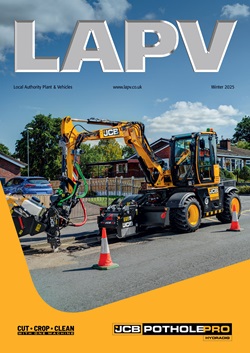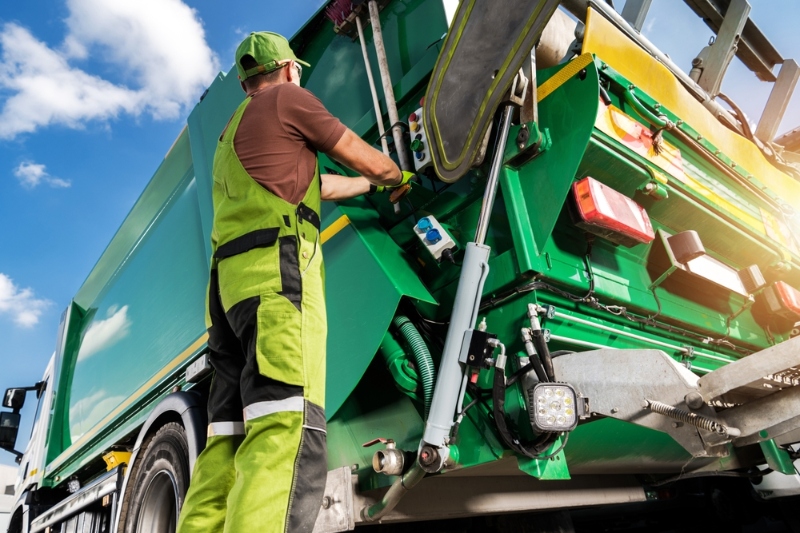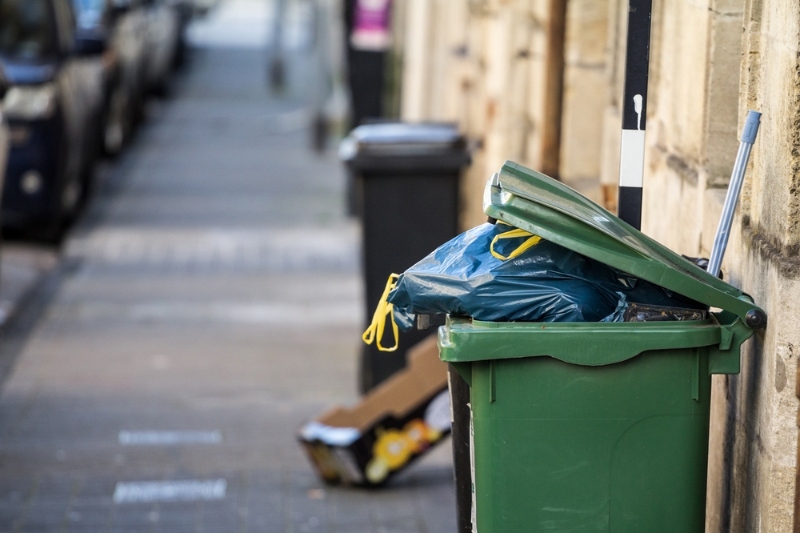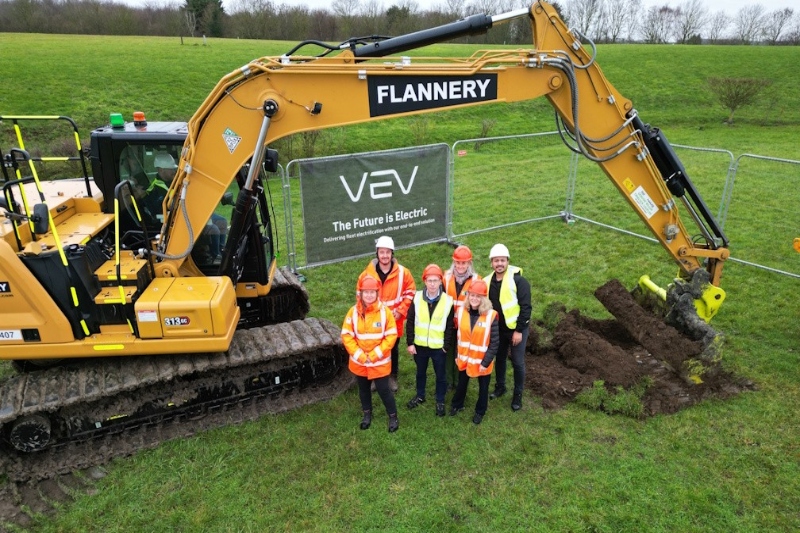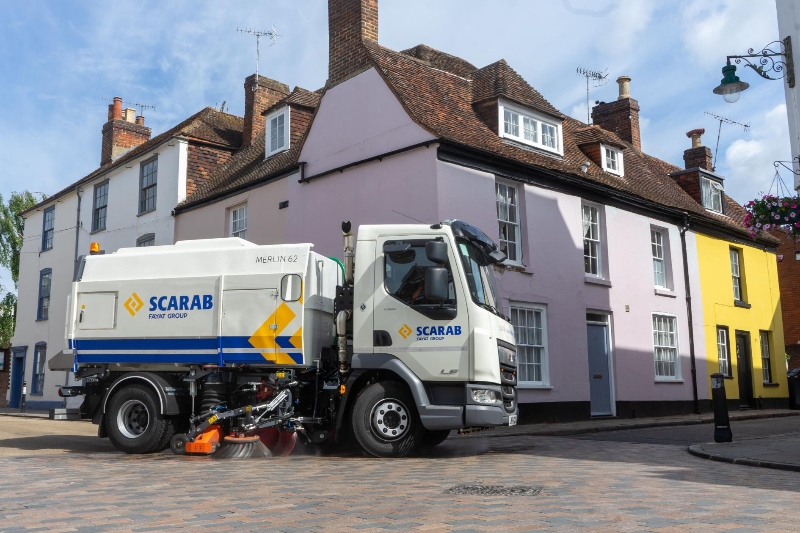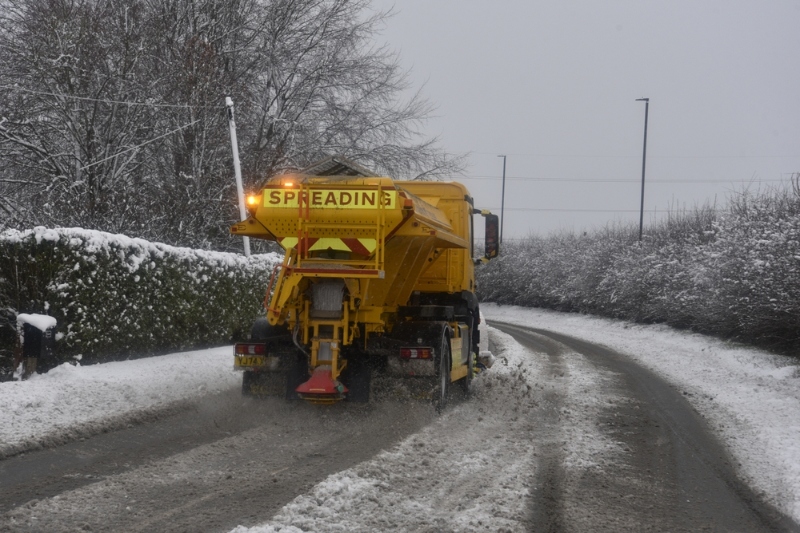In a world where waste streams and recycling targets change constantly, the new Terberg Kerbloader recycling truck has been designed to provide the flexibility operators need, reports LAPV.
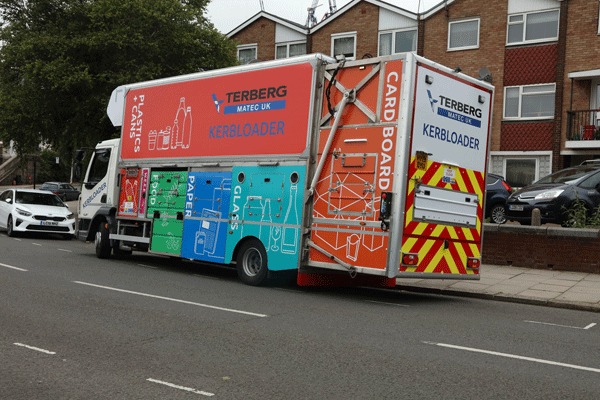
With the potential to collect as many as eight segregated recycling materials at once, the Terberg Kerbloader made one-pass collections a desirable option. However, Terberg believes a recent redesign has significantly improved the vehicle’s efficiency and also tackles the problem of tyre-shredding.
Tyre-shredding results from vehicles driving over the broken glass at waste transfer stations. Glass is usually tipped sideways from recycling vehicles. Still, as most glass bottles are round, they have an unfortunate habit of rolling under the wheels where they get crushed as the truck drives away. This damages tyres, which is a major headache for operators. Replacing them comes at a high cost, and there is also an environmental impact to throwing out tyres prematurely, sometimes long before the end of their useful life.
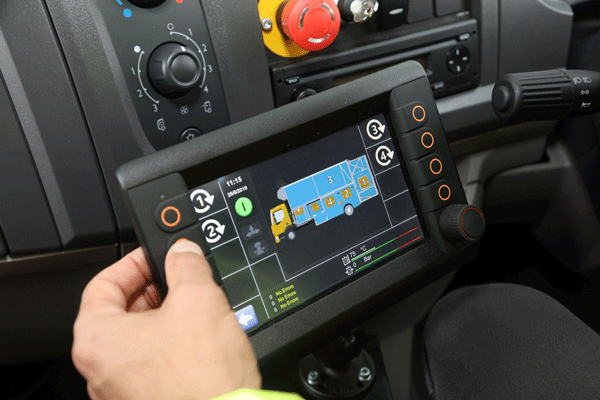
Terberg Matec UK Managing Director Will Marzano said: ‘Our engineers have redesigned the Kerbloader to alleviate this problem. Now glass is tipped from the rear of the vehicle. At the same time, its trajectory takes it backwards, away from the truck. Then, as the vehicle drives forward to leave the station, there’s minimal risk of running over the glass. It could save operators thousands of pounds a year as well as benefiting the environment.’
And that’s not all that’s new. While the vehicle was back on the design board, Terberg’s engineers took the opportunity to improve both the compacting and ejecting systems to increase the Kerbloader’s efficiency and ability to manage evolving domestic waste streams. The rapid and continuing growth in online shopping is seeing higher volumes of cardboard collection from homes, for example, so the Kerbloader uses a rear-mounted, heavy-duty card-press system to maximise the quantities it can collect.
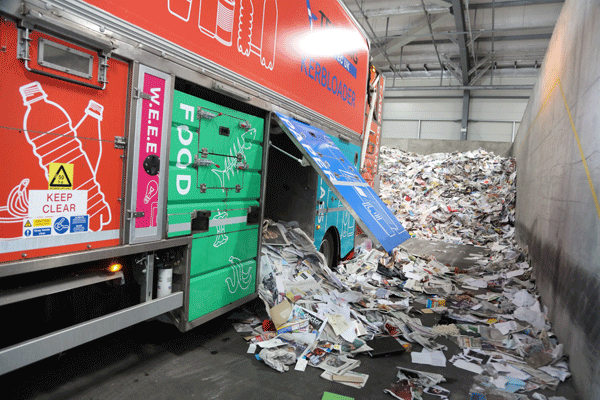
‘By improving the efficiency of our compaction system, the new vehicle can now pack more cardboard than ever before,’ said Will. ‘We have also given customers the option of three different sizes of tailgate – compact, standard, and extra-large – to suit their different needs.’
Hatches on different compartments have been made larger to enable quicker and safer loading and to reduce collection times. RFID coded safety switches are also fitted to hatches, which can be quickly and cheaply replaced should damage occur.
A viewing window is fitted to the scissor lift loading compartment so operators can see the level in the chamber. There is also the option of fitting an internal LED lighting to each compartment of the vehicle to help operators monitor the levels and types of material.
‘While compartment size on most other recycling vehicles is fairly fixed, we can make compartments on the Kerbloader bigger or smaller – this is the kind of flexibility the market needs,' explains Will. ‘We’ve also improved the automated plastic compaction system so we can pack more plastic than before. This means the new Kerbloader is delivering excellent operational efficiency. The customers who have had the vehicle on trial tell us that it loads faster, empties faster, and has greater capacity than anything else they have tried.’
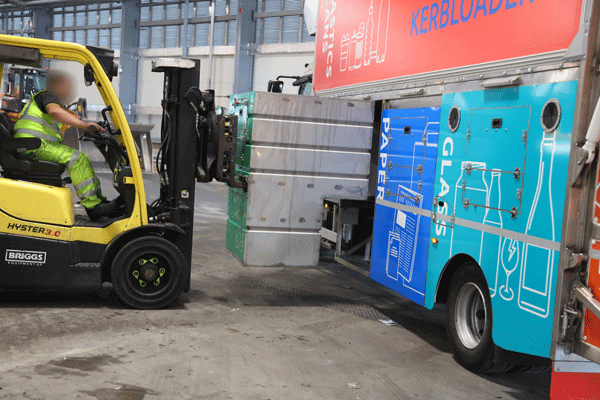
Other improvements mean all controls – including the fast discharge of material – can now be operated from within the cab itself, with the help of a Human Machine Interface (HMI) control screen. Therefore crew don’t have to get out of the vehicle at waste transfer stations, which improves safety as well as speeding up the unloading process. The HMI screen also enables operation of the diagnostics systems.
Maximising payload by minimising weight has always been one of the key selling points of the Kerbloader. T durable stainless aluminium and composite GRP body. The automatic compaction and ejection mechanism for cans and plastics are not only lighter than a multistage hydraulic cylinder, but it is also much easier to maintain and packs faster, with cycle times of 15 seconds and an efficient pack-on-the-move function. No time is wasted.
In the waste and recycling industry, safety and efficiency often go hand-in-hand, and the improved speed and efficiency of the new Kerbloader have not compromised security in any way. The LED lighting is used both to illuminate the area around the vehicle body for safe and efficient loading, as well as in the internal compartments to help avoid cross-contamination.
Terberg has also fitted a noise-reducing system to the glass collection compartments, developed through an on-going collaboration with the Health and Safety Executive aimed at reducing the noise of glass collection in recycling vehicles. And stillages are removed from the truck with a fork-lift to avoid the pushing and pulling injuries so often associated with manual handling.
The result is a very safe, highly efficient, corrosion-free, lightweight vehicle with payloads of up to four tonnes.
The new Kerbloader was put through its paces at trade shows in May where feedback was excellent. And the demo vehicle has continued to impress wherever it has gone on trial since then.
Operations Supervisor Russell Broughton, who took the new vehicle on trial with Flintshire County Borough Council, said: ‘It holds a lot more, which gave us improved performance. The operation of the PTO system was much better. The noise levels were reduced, and the discharge of the glass at the rear reduces tyre damage. Overall we couldn’t fault it, and the crew enjoyed it too.’


